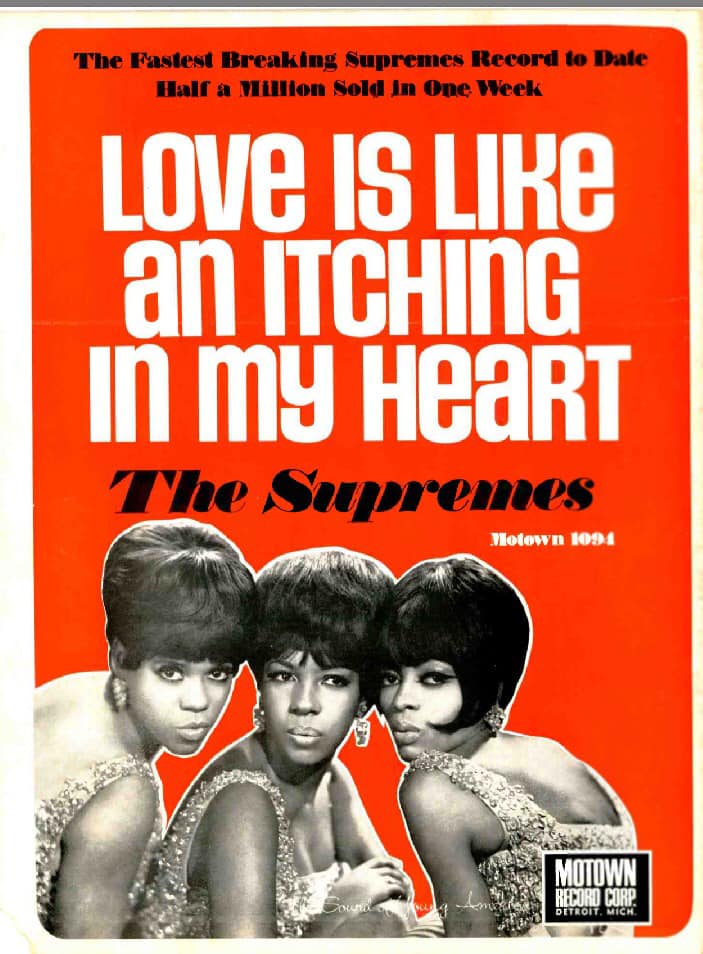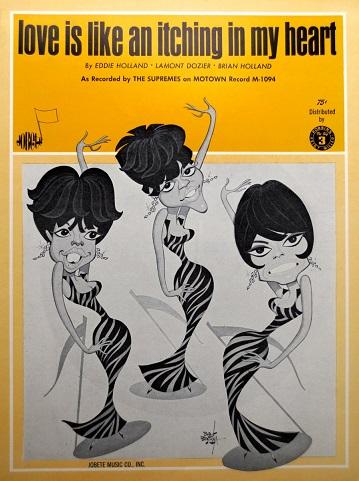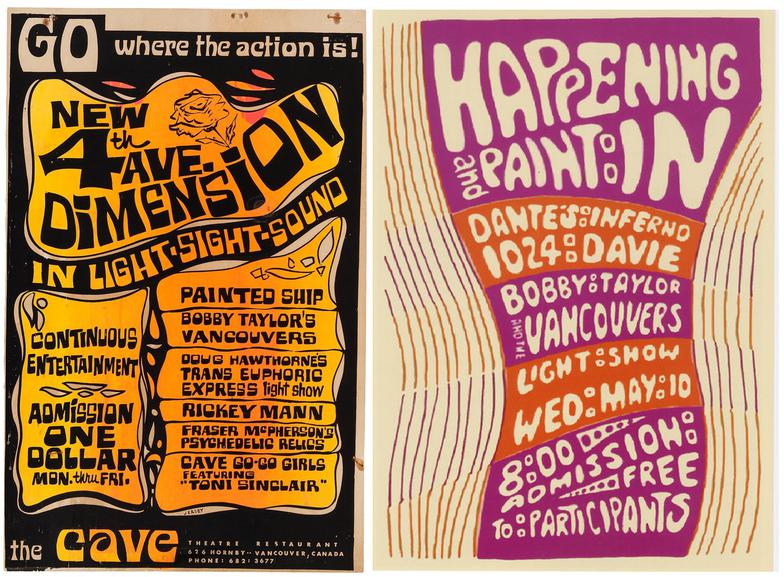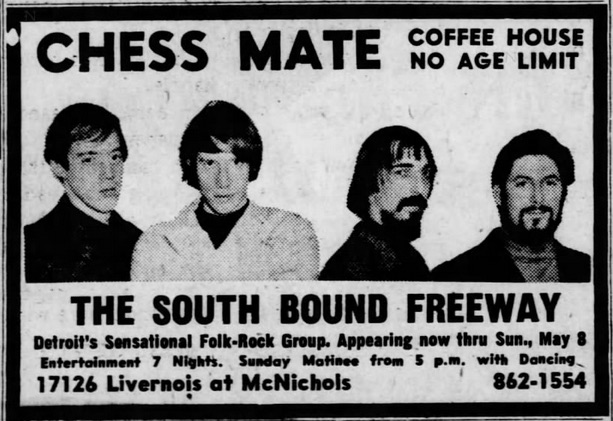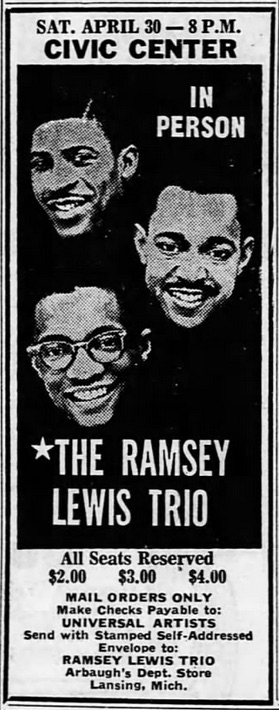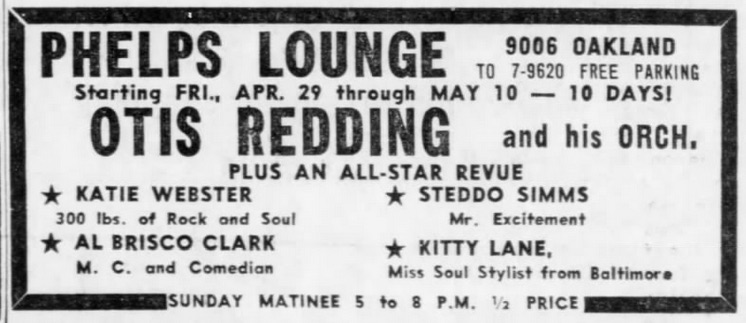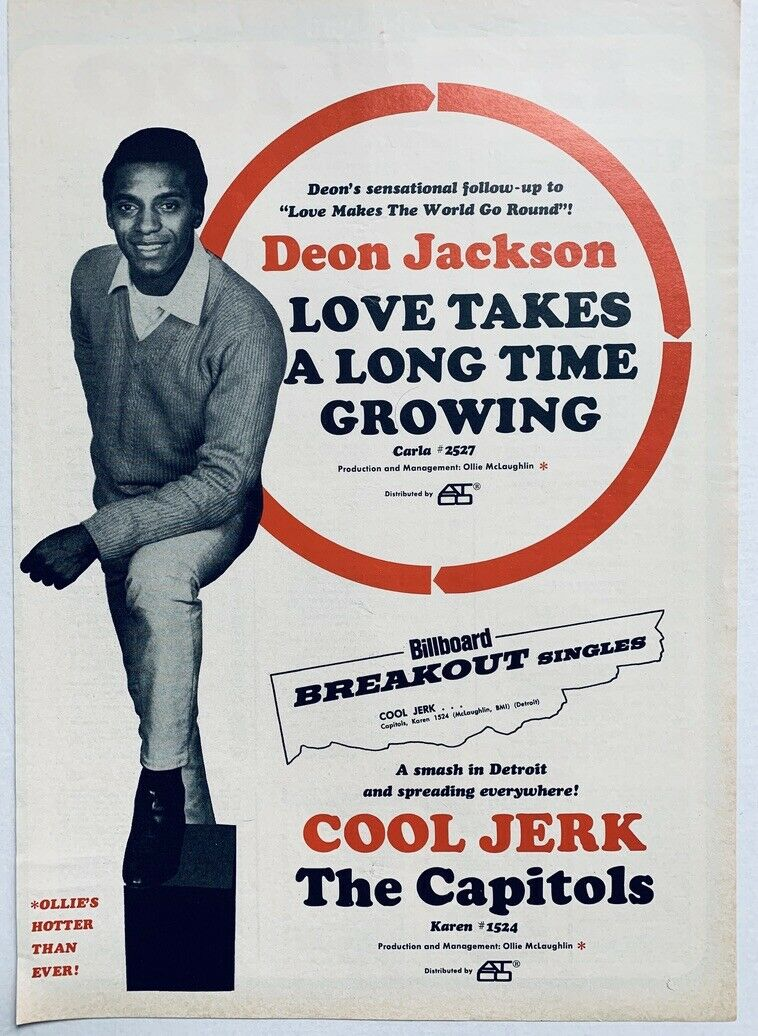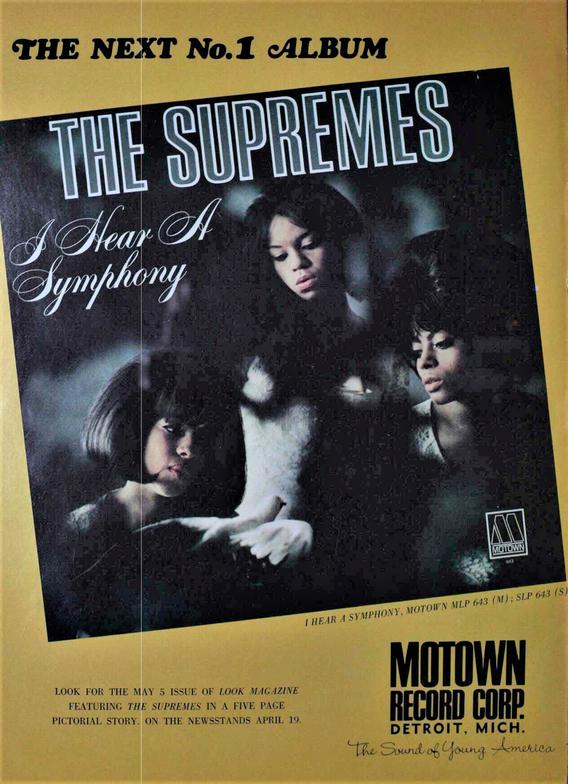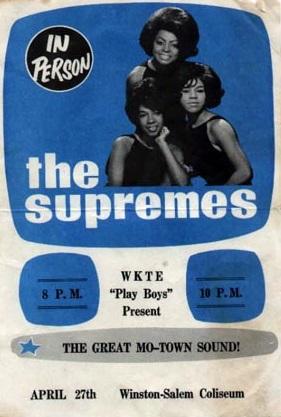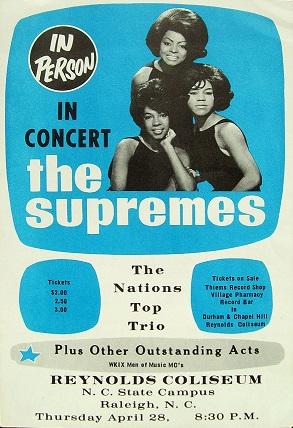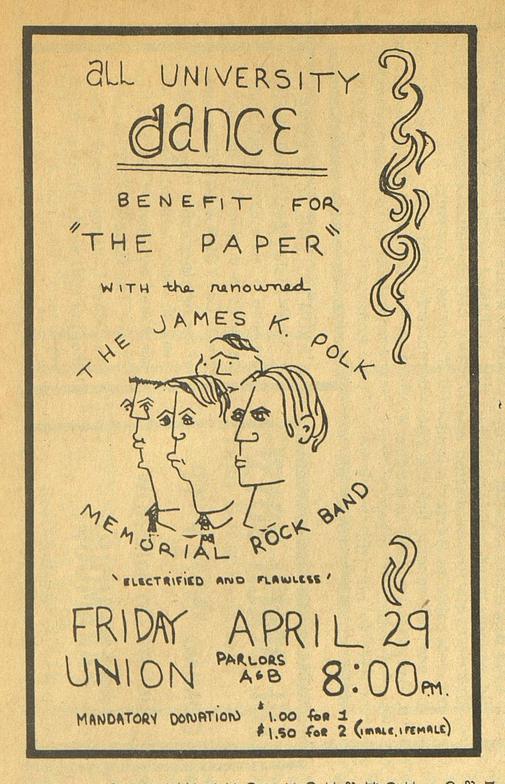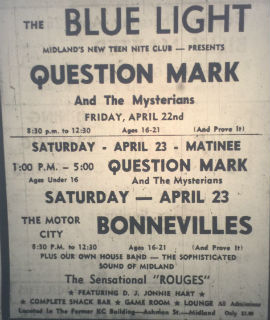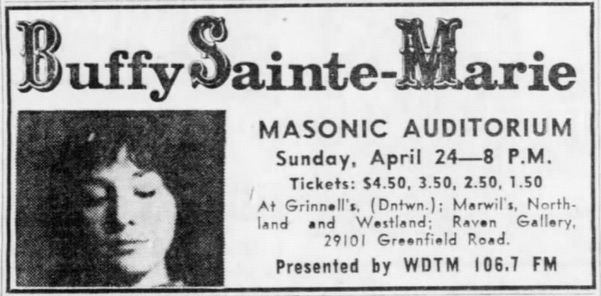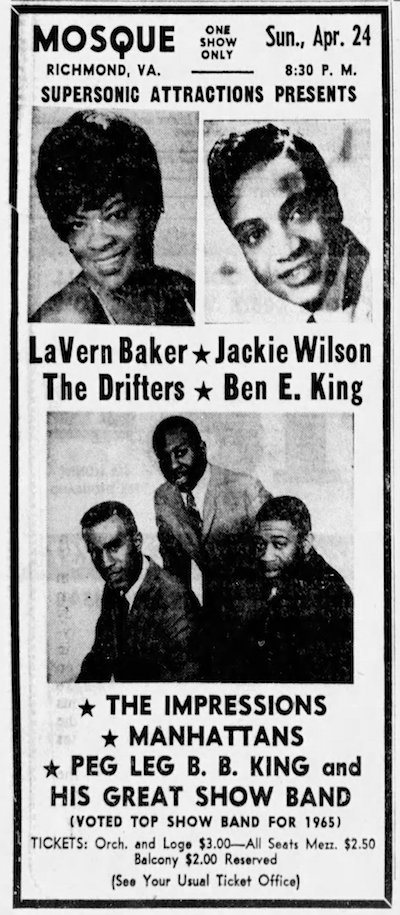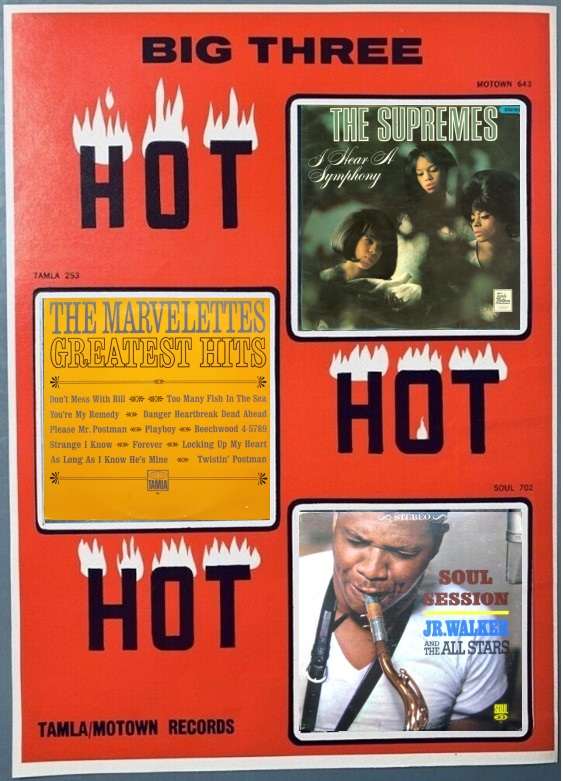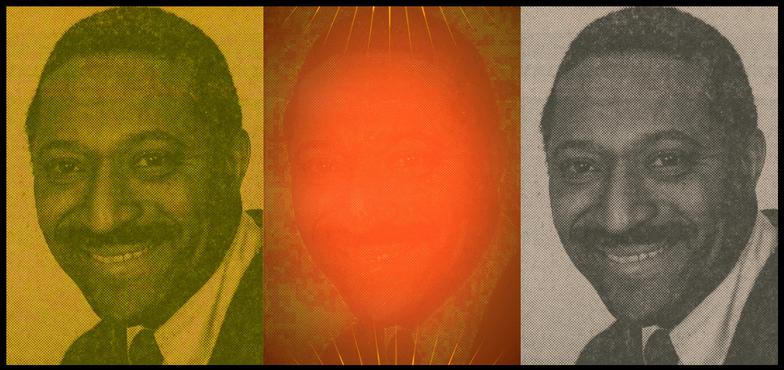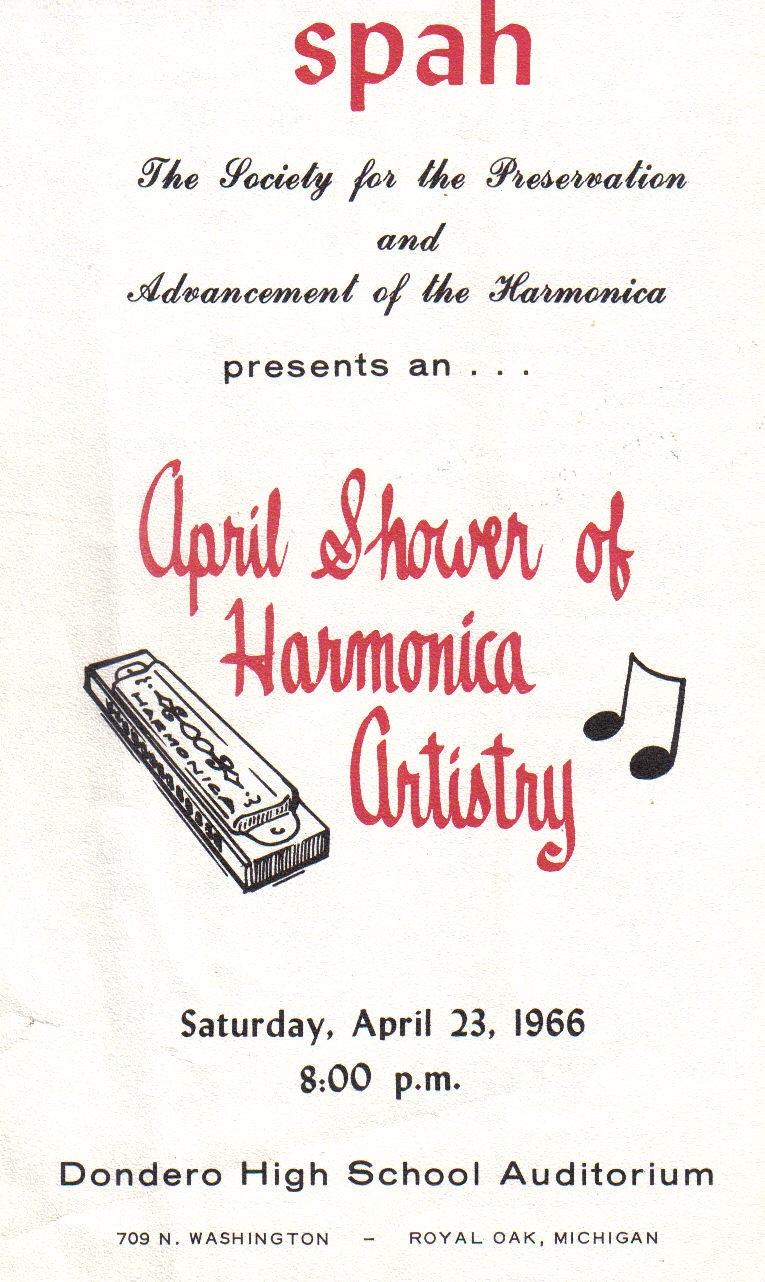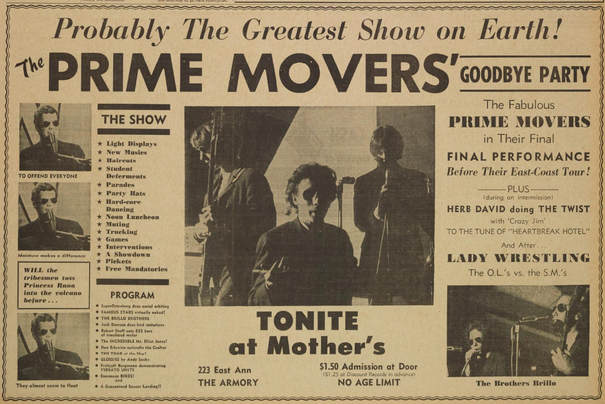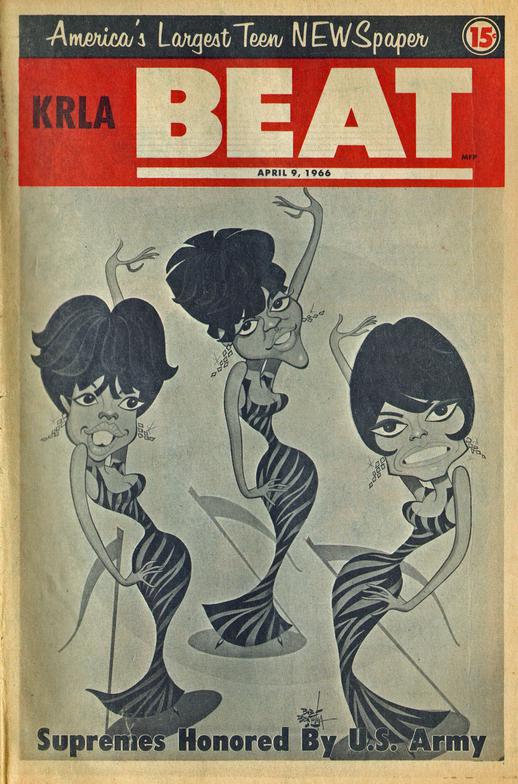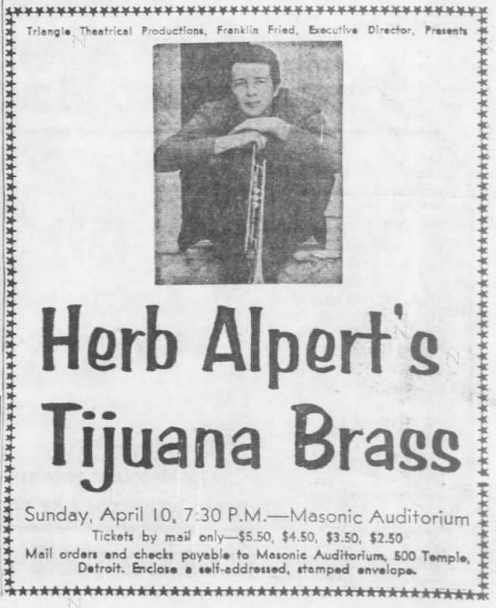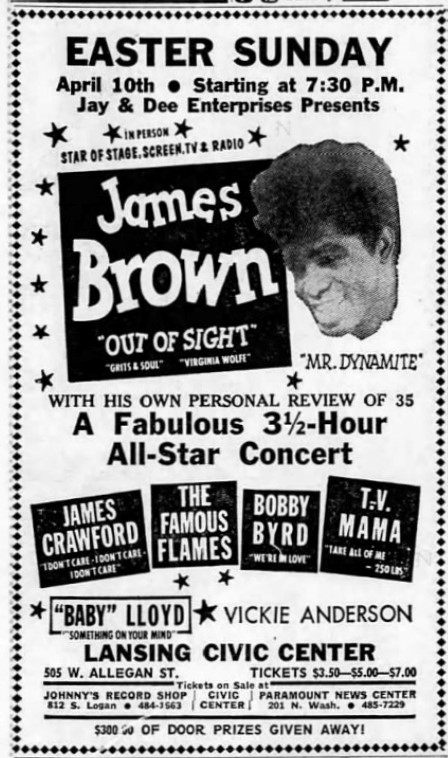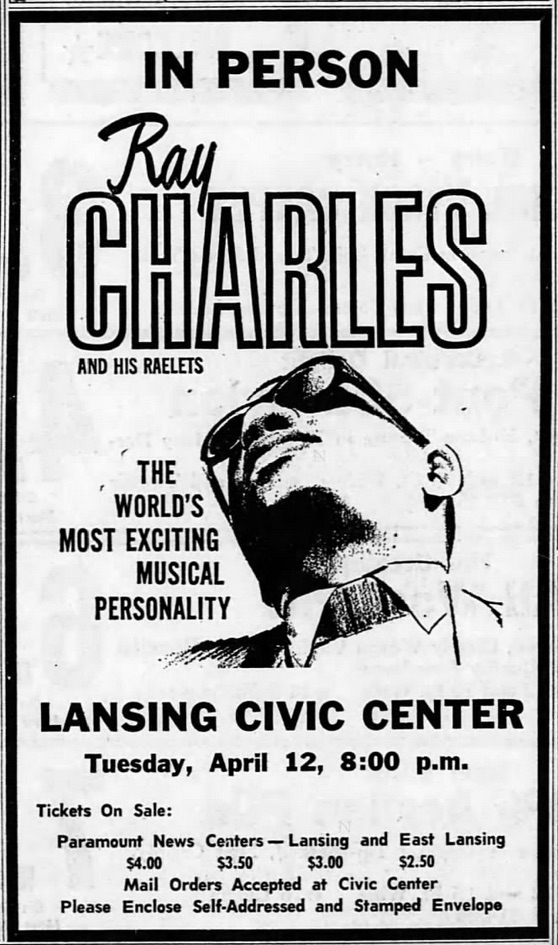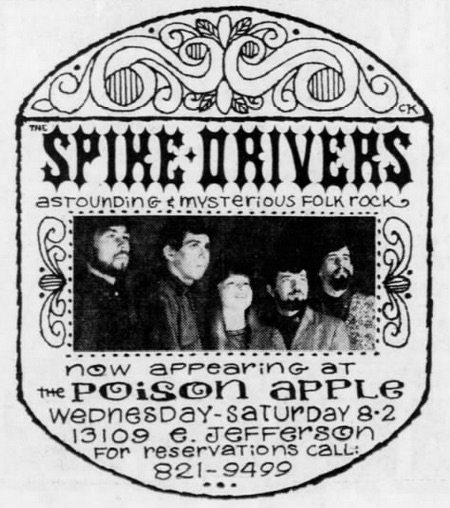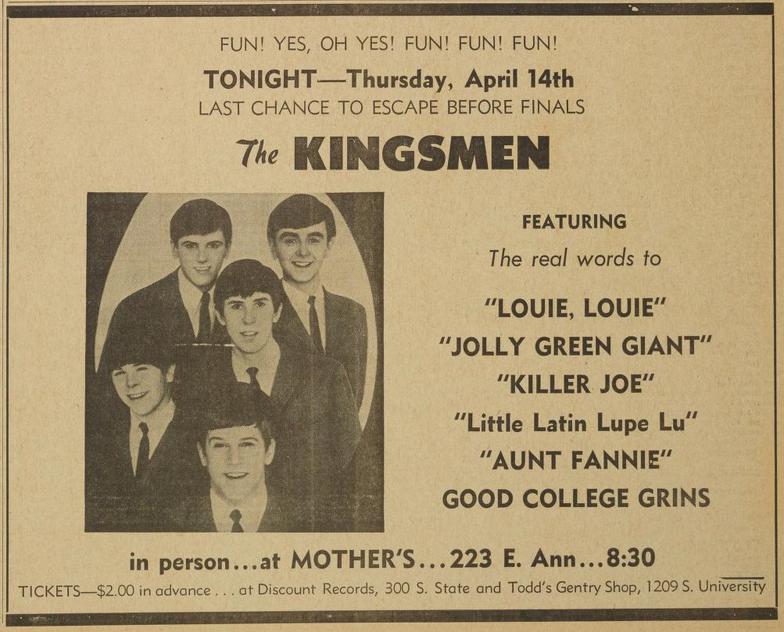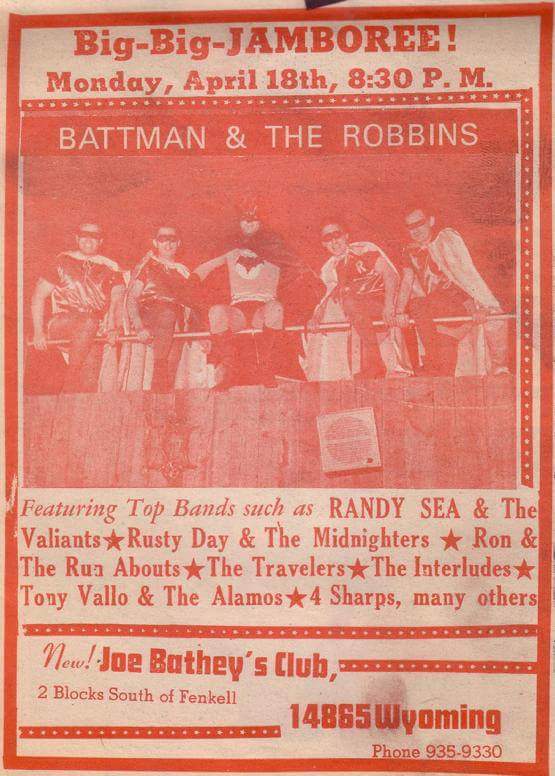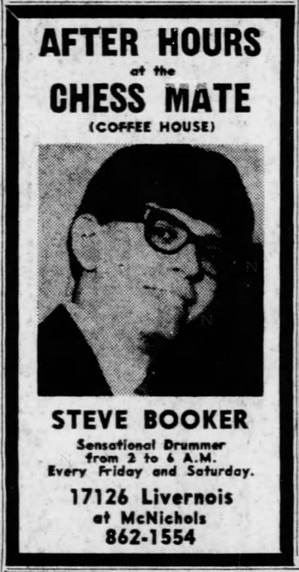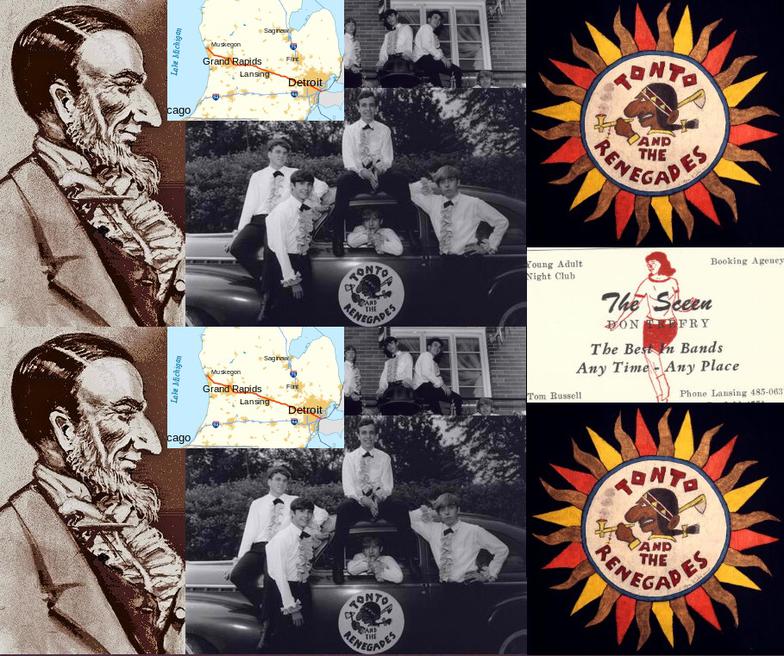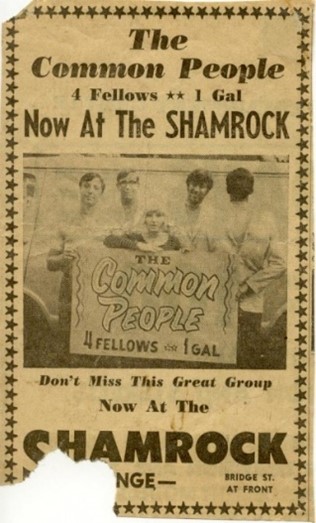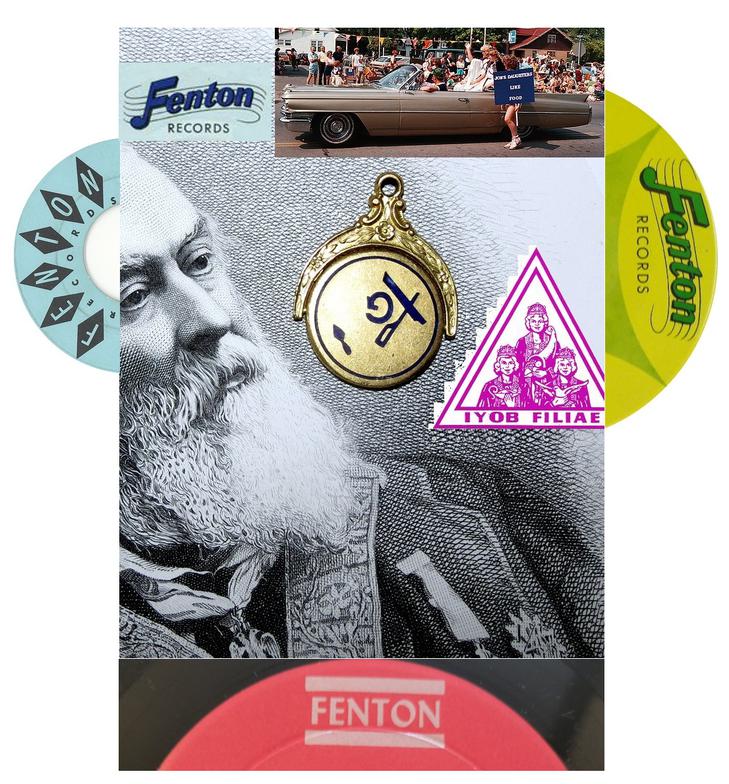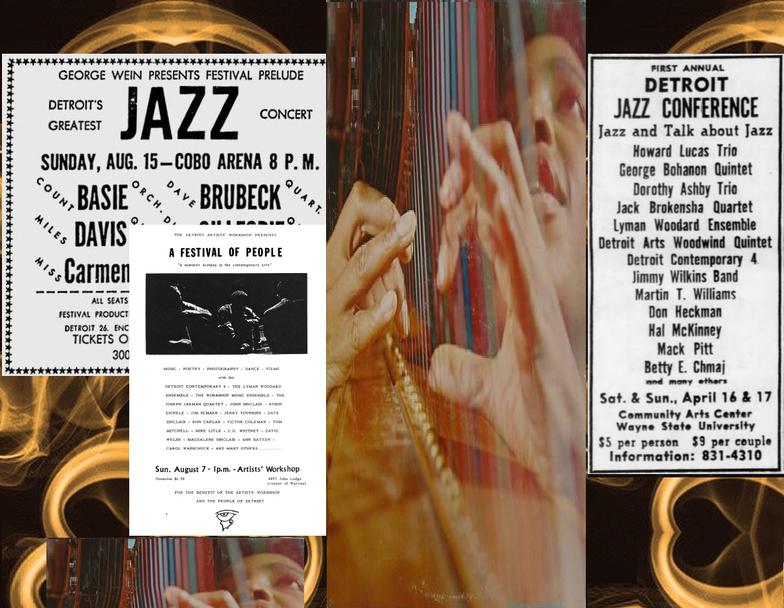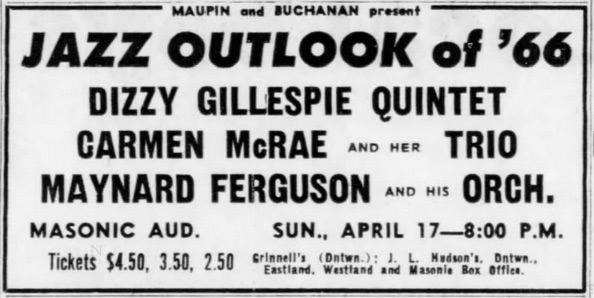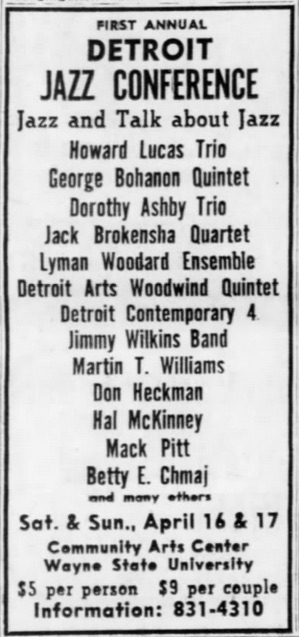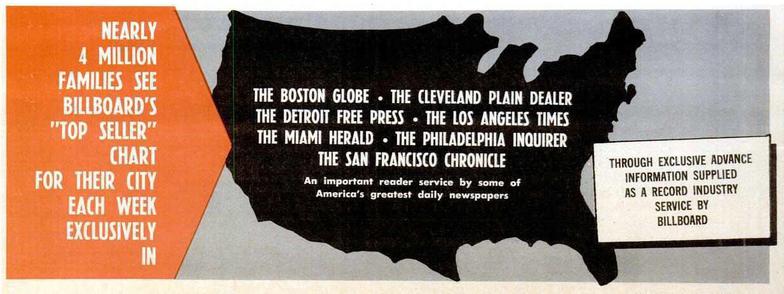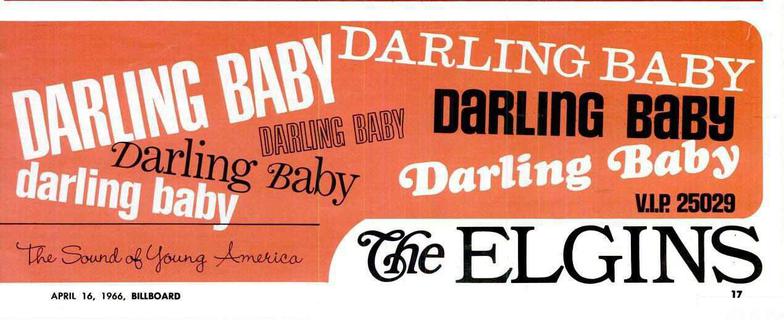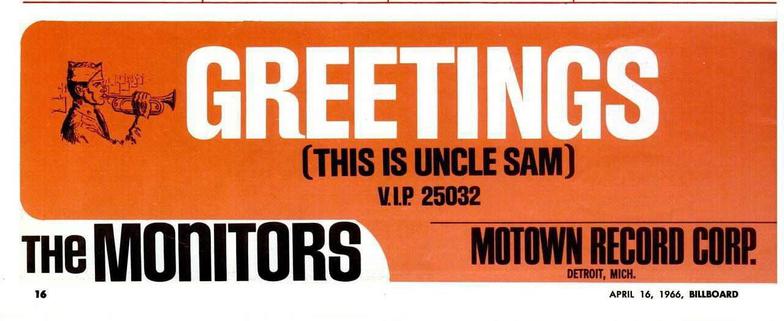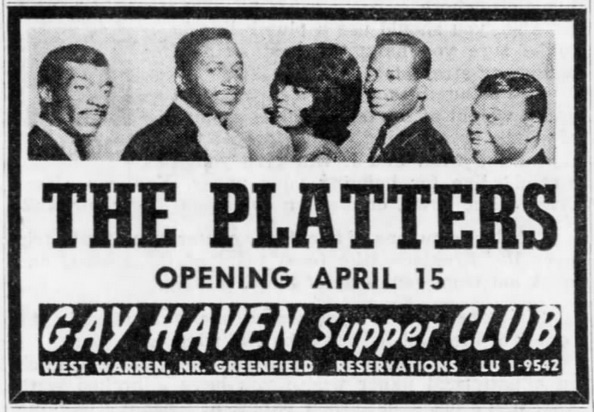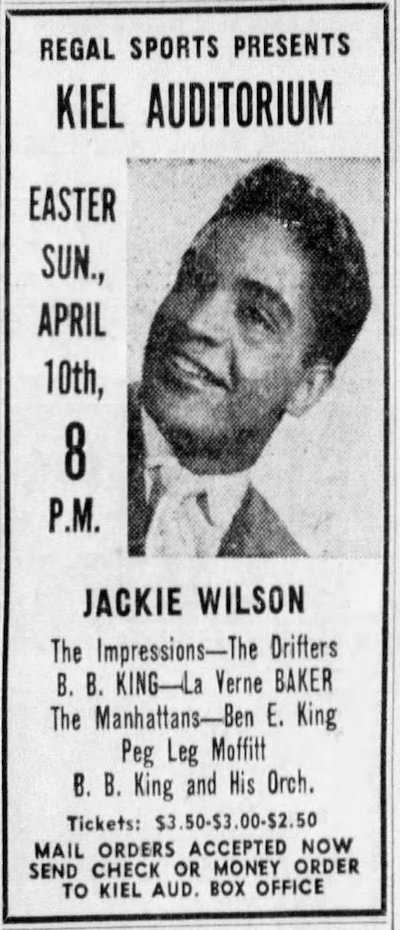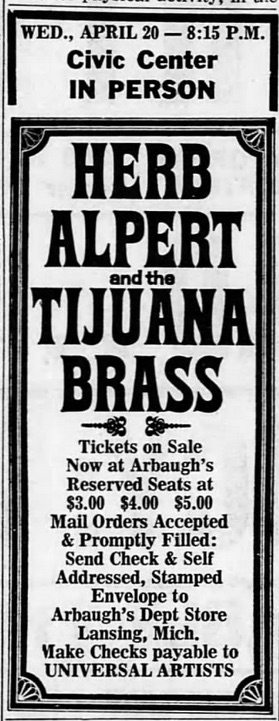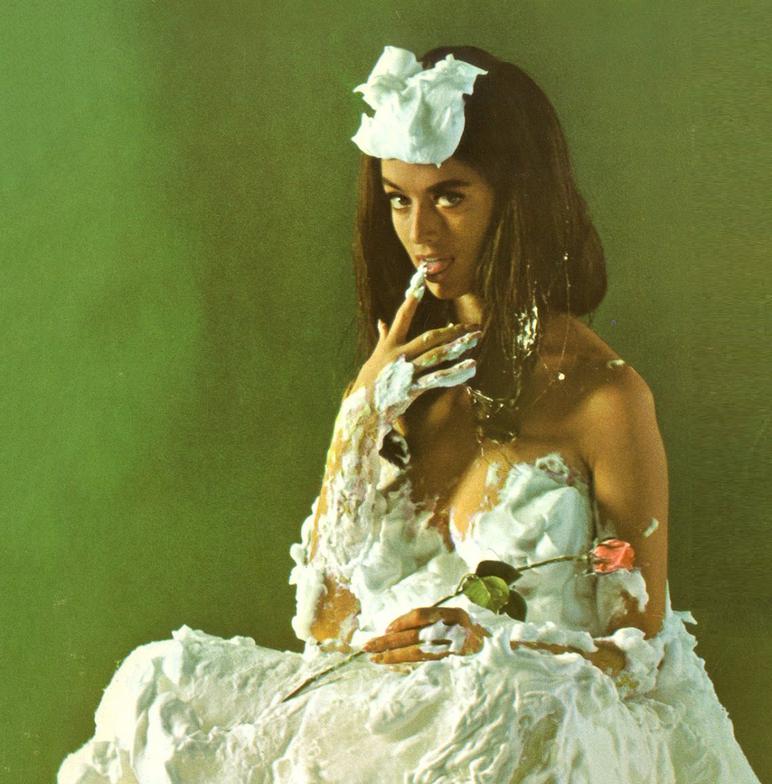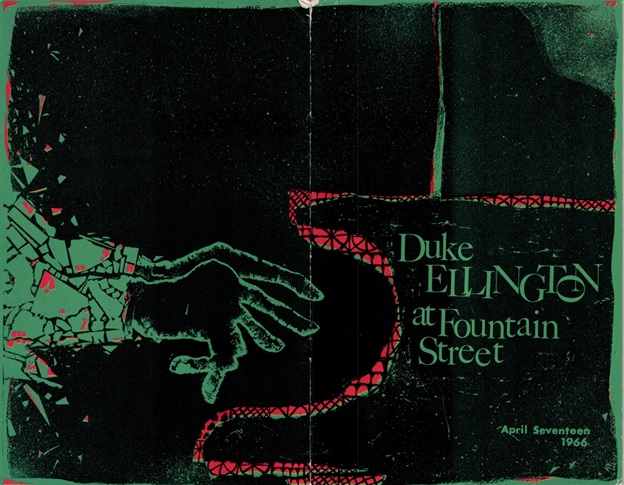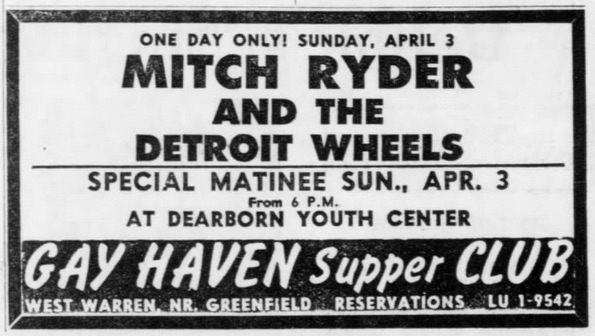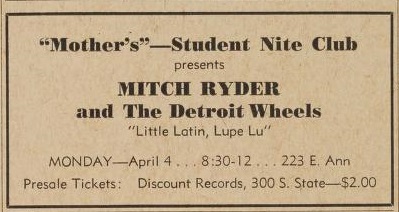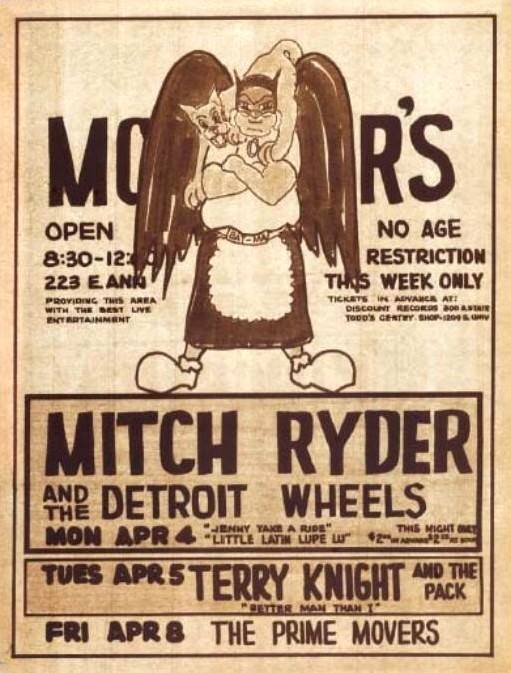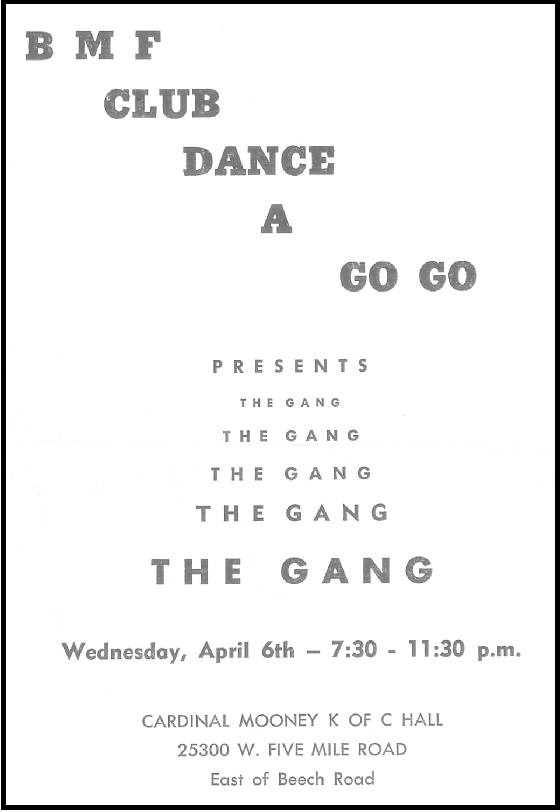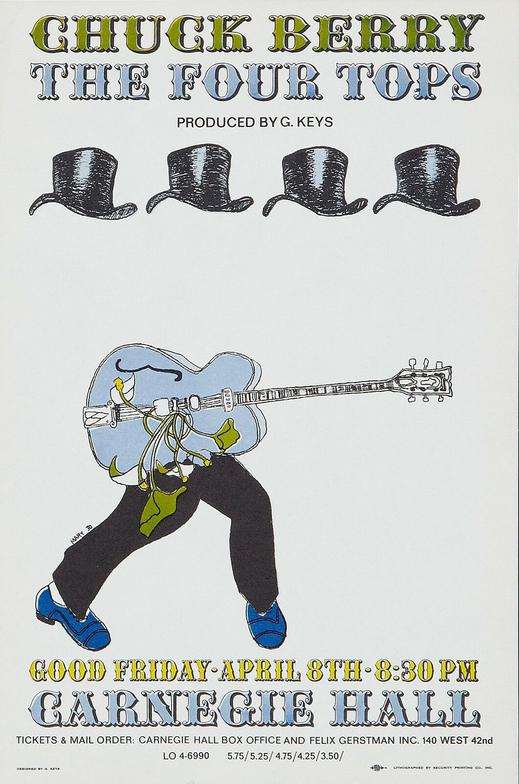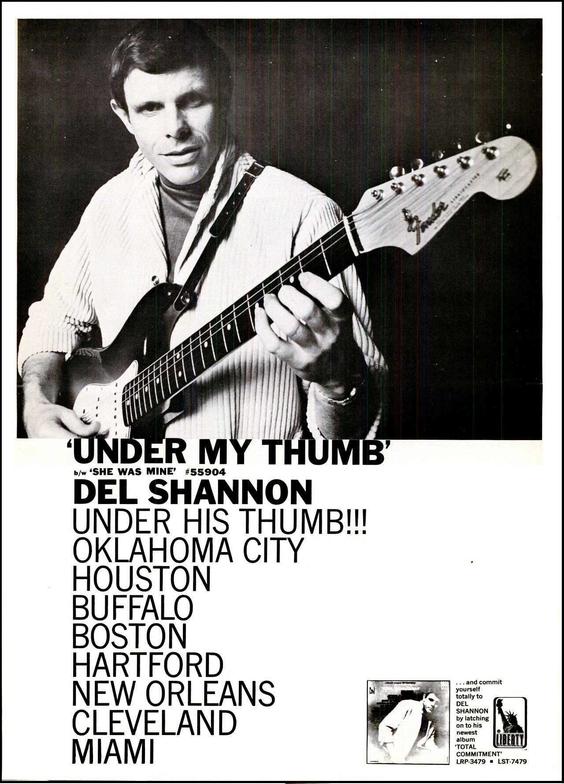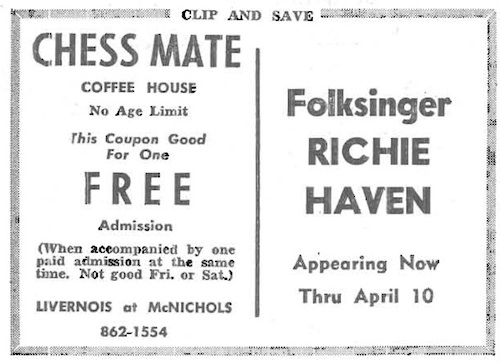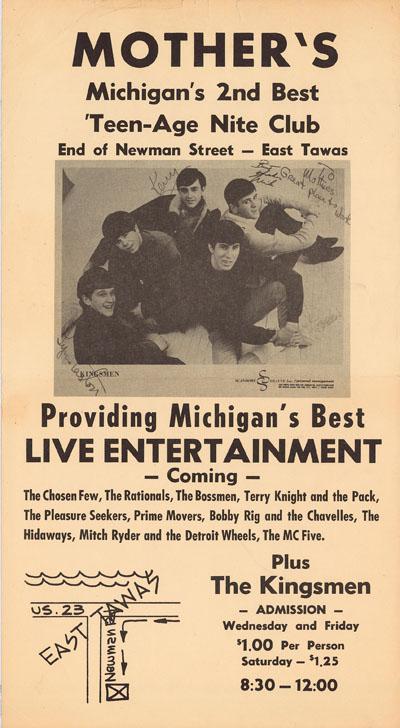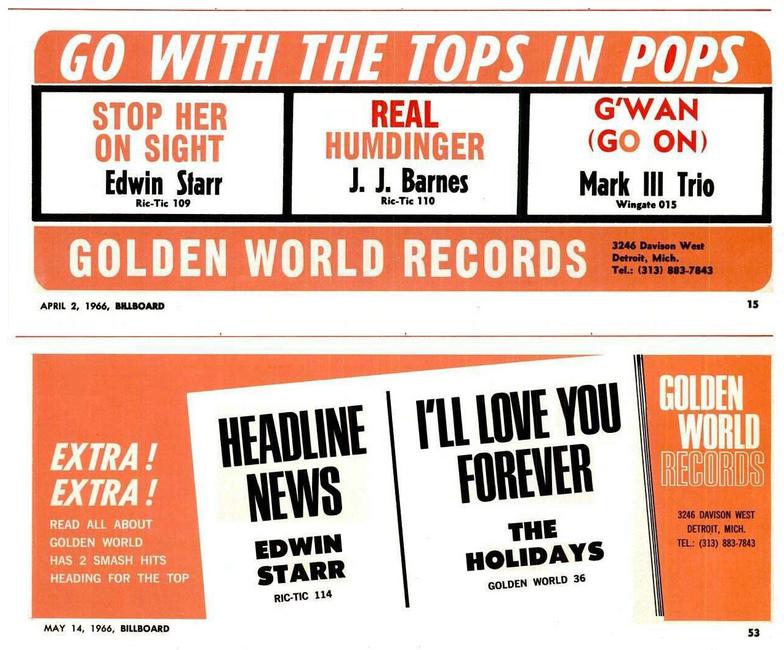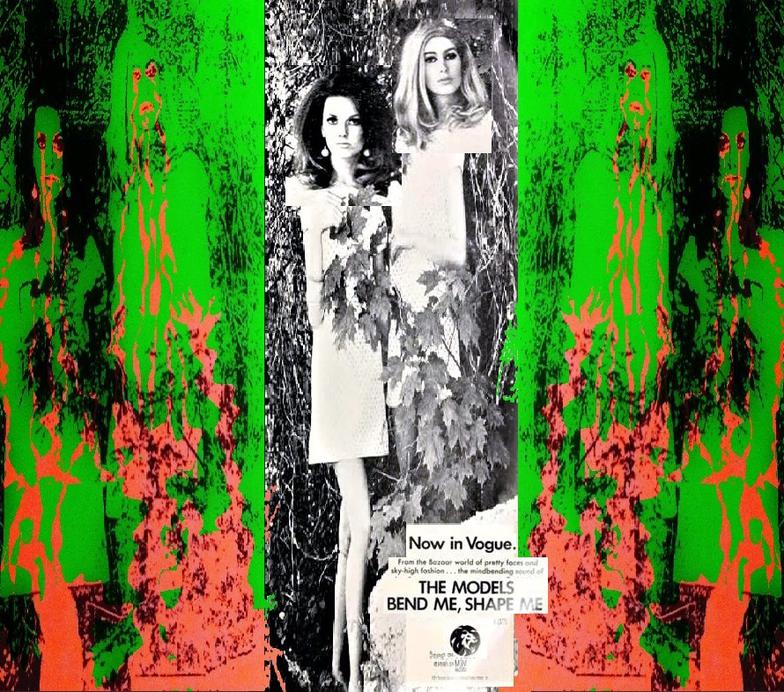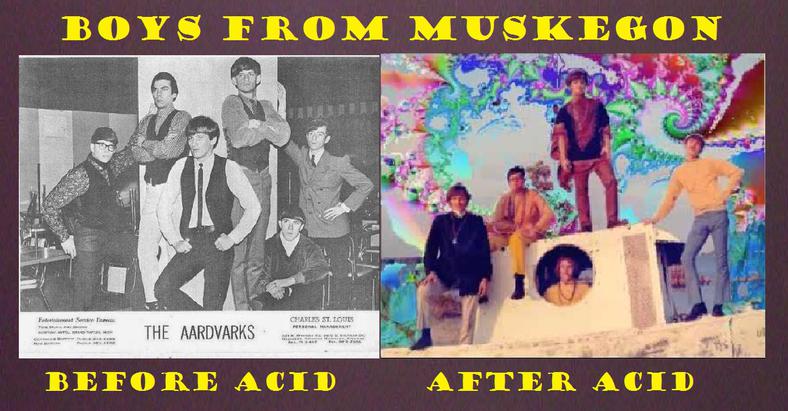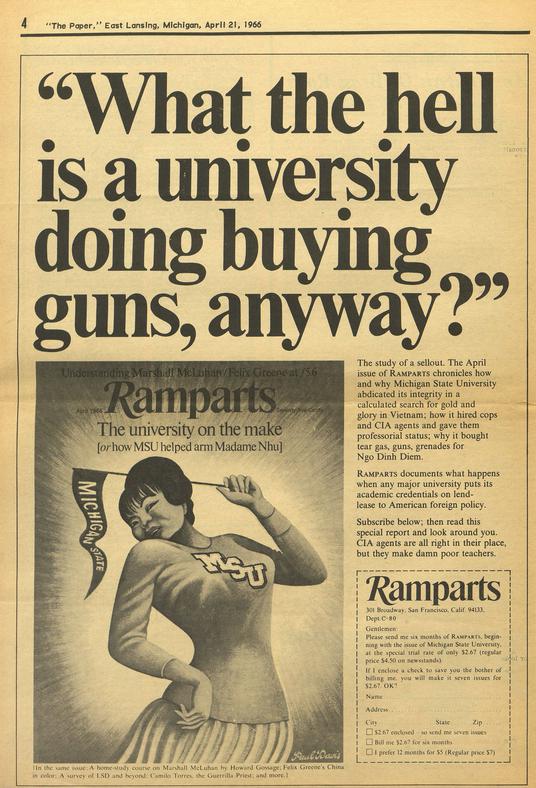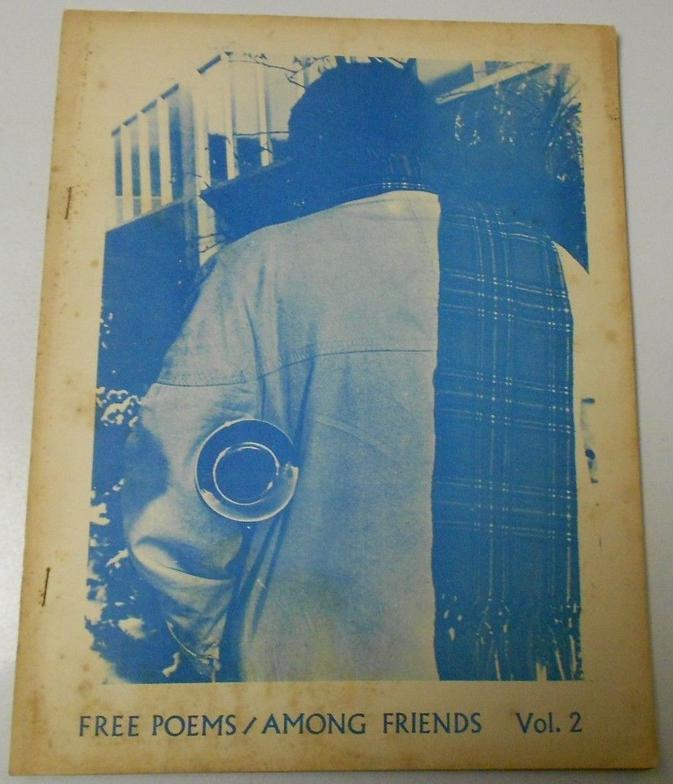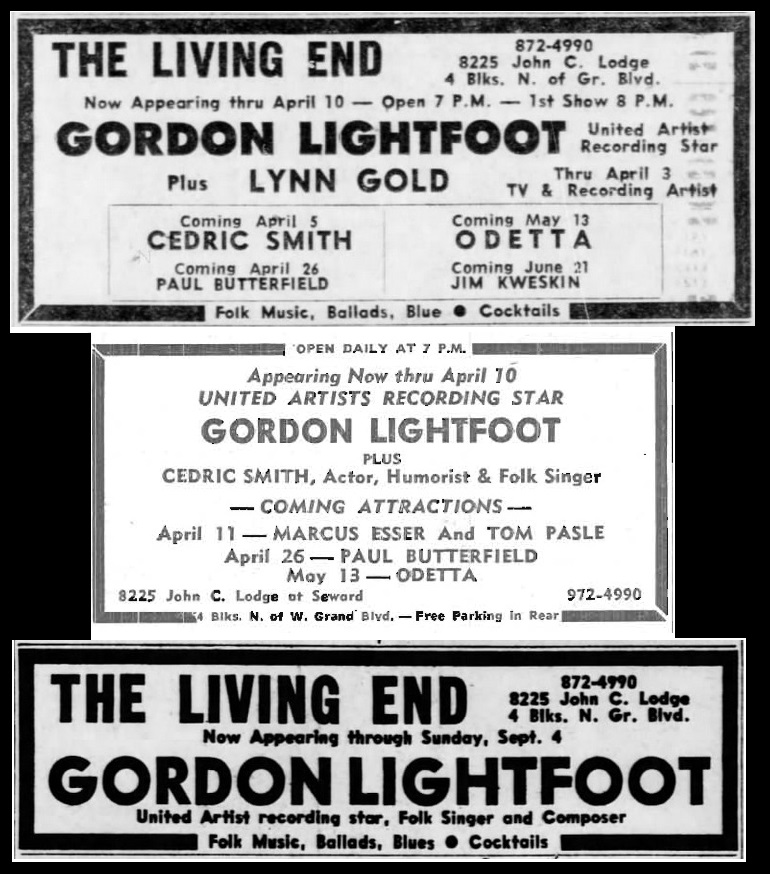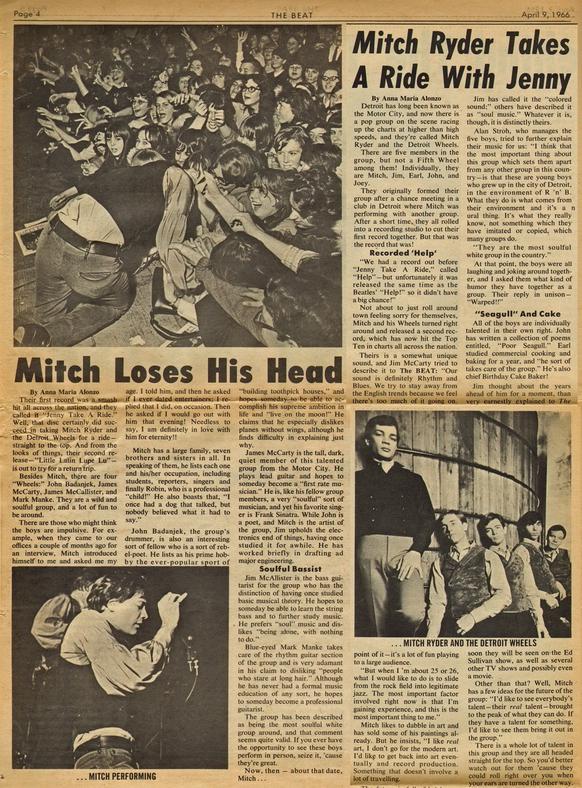Splatt Gallery
Double click here to add text.
Splatt Gallery's History of Michigan Music Posters
Volume Two - 1964-1966 - Page Thirteen
************************************************************
Volume Two - 1964-1966 - continues - HERE
A Motown Records ad for the Supremes' single, which they debuted on the Ed Sullivan TV show on May 1, 1966.
The Supremes – Love is Like an Itching in My Heart (1966)
https://www.youtube.com/watch?v=Vi5-CjEhllY
Sheet music for the Supremes’ song Love is Like an Itching in My Heart, with cover illustration by Bob Bentovoja.
Connie Keelan poster for The Spike Drivers at the Raven Gallery, May 1, 1966.
A couple of posters from two clubs in Vancouver, British Columbia, Canada, circa early 1966, with appearances by Bobby Taylor & the Vancouvers. The one on the left is from The Cave, a long-time venue that brought top performers to Vancouver from 1937 until 1981. The one on the right is from Dante’s Inferno which was on the ground floor of the Embassy Ballroom. In the basement of the Embassy Ballroom, Tommy Chong ran an afterhours club called the Elegant Parlour.
The Supremes were performing at The Cave from May 4, 1966 through the 14th. It was on one of those nights that Mary Wilson and Flo Ballard went to the Elegant Parlour after their show at The Cave, and first saw Bobby Taylor & the Vancouvers perform, and recommended them to Berry Gordy.
An ad for the Southbound Freeway at the Chess Mate in Detroit, May 3-8, 1966, then continuing Sunday afternoons through the rest of the month.
An ad for a happy Ramsey Lewis Trio in Lansing, Michigan on April 30, 1966.
An ad for Otis Redding at Phelps Loung in Detroit for ten days, April 29, 1966 through May 10th. These shows, along with an April 1964 show opening for James Brown at Cobo Arena, appear to be Redding’s only Michigan appearances.
A full-page ad in the April 23, 1966 issue of Cash Box magazine with Ollie McLaughlin’s Karen and Carla record labels, with the mighty “Cool Jerk” by the Capitols on the former and the latest from Deon Jackson on the latter.
An online review of “Love Takes a Long Time Growing” reads: “A-side is a reasonable variation on the (hit) “Love Makes the World Go Round” theme - B side is a much more interesting and soulful side, definitely worthy of attention.”
Deon Jackson – “Hush Little Baby” (1966)
https://www.youtube.com/watch?v=g3FjD_5TxUc
A full-page Motown Records ad in the April 23, 1966 issue of Billboard magazine for the Supremes’ album “I Hear A Symphony” with a note that the group would be featured in a five page pictorial story in the May 5th issue of Look magazine.
Poster for the Supremes in Winston-Salem, North Carolina, April 27, 1966.
Poster for the Supremes in Raleigh, North Carolina, April 28, 1966.
An ad for a dance at Michigan State University in East Lansing in a benefit for the underground newspaper The Paper on April 29, 1966, featuring the James K. Polk Memorial Rock Band, “electrified and flawless”.
Poster/flyer for Question Mark & the Mysterians at the Blue Light in Midland, Michigan, April 22-23, 1966, along with the Motor City Bonnevilles and the Sensational "Rouges".
An ad for Jerry Lee Lewis at the Joe Bathey Club in Detroit on April 28, 1966, his first time back in Michigan in eight years. He would be back at the club in June.
An ad for Buffy Sainte-Marie at Masonic Auditorium in Detroit on April 24, 1966, her ninth Michigan appearance over two years.
An ad with Jackie Wilson in Richmond, Virginia on April 24, 1966.
A full-page Tamla Motown Records ad in the April 23, 1966 issue of Cash Box magazine with the albums “I Hear A Symphony” by the Supremes, the Marvelettes’ “Greatest Hits”, and “Soul Session” by Jr. Walker & the All Stars.
When looking for Detroit record labels named after women, we find Karen, Carla, Moira, and Ruth - all owned by Ollie McLaughlin (and named after his wife and three daughters). You might recall Ollie as the Ann Arbor DJ who launched the career of Coopersville's Charles Westover, later known as Del Shannon. Following that success, Ollie moved to Detroit and started the aforementioned labels, and continued the role of hit-maker for Barbara Lewis, Deon Jackson, and The Capitols, who cranked out this new dance craze.
Like "The Twist", Detroit was the origination for "The Jerk", and like The Twist, The Jerk spawned a year-long fad of jerk answer records and other jerky permutations ad infinitude. If this sounds a little bit like a Motown record, it’s probably because it’s the moon-lighting Funk Brothers again (they did that a lot even though strictly forbidden by Berry Gordy) and the classic bass line is unmistakably Bob Babbitt.
“Cool Jerk” entered the Billboard Hot 100 singles chart on April 23, 1966, peaking at #7 on the week ending on July 2nd. It rose to #2 on the R&B Singles chart.
The Capitols – Cool Jerk (1966)
https://www.youtube.com/watch?v=OX9nOCOjukQ
A poster for a concert by “spah”, The Society for the Preservation and Advancement of the Harmonica, at the Dondero High School in Royal Oak, Michigan, April 23, 1966.
A large ad for the Prime Movers by Michael Erlewine for a “Goodbye Party” at Mother’s in Ann Arbor, Michigan on April 8, 1966 before the band went on an East Coast tour.
The cover of the April 9, 1966 issue of the KRLA BEAT magazine in Los Angeles, California, featuring artist Bob Bentovoja’s classic caricature of the Supremes. The issue also featured a story on Mitch Ryder & the Detroit Wheels, shown above along with another Ryder coverage in a different issue.
The first Michigan appearance by Herb Alpert’s Tijuana Brass, at Masonic Auditorium in Detroit, April 10, 1966, and in Lansing ten days later.
Poster/ad for James Brown in Lansing, Michigan on April 10, 1966, it was his ninth Michigan show and his first outside of Detroit. Brown has written that the song “Out Of Sight” which is highlighted on the poster was an evolutionary step from R&B to funk, it was also one of his first recordings to feature saxophonist Maceo Parker.
James Brown – Out Of Sight (1964)
https://www.youtube.com/watch?v=7PtI_xVfuUM
Poster/ad for Ray Charles at the Lansing Civic Center in Lansing, Michigan, April 12, 1966.
Connie Keelan poster for The Spike Drivers at the Poison Apple in Detroit, April 13-16, 1966.
TAn ad for the Kingsmen at Mother’s in Ann Arbor, April 14, 1966.
A show by Battman & the Robbins at Joe Bathey’s Club in Detroit, Michigan, April 18, 1966. Rusty Day & the Midnighters were in attendance, among others.
An ad with Steve Booker continuing his After Hours shows at the Chess Mate in Detroit from April 22, 1966 through the end of May.
A close personal friend of President Thomas Jefferson, Augustus Woodward, was appointed as the Michigan Territory’s first Chief Justice in 1805 and sent to Detroit to rebuild the city following a devastating fire that had wiped out every building in town. Woodward designed the six major spokes that branch out from the hub of the city, Michigan Avenue, Gratiot Avenue, Woodward Avenue, Jefferson Avenue, Grand River Avenue, and Fort Street.
Grand River Avenue makes a bee-line northwest to the city of Lansing, and from there, the actual Grand River flows through the lands of wise men and fair women, through the city of Grand Rapids (built along the rapids that are no longer there) before spilling out into Lake Michigan near the town of Grand Haven.
Just past Lansing, along this illustrious route, is the town of Grand Haven, which was home to a teen dance club called The Sceen and a teenage rocking combo called, Tonto & The Renegades. The Sceen was kind of a huge scene, a converted motel with four stages and large outdoor party area, and kids from miles around would descend on the place to hear bands like The Bossmen and The Woolies, and of course, Tonto & The Renegades.
It isn’t too much farther along the trail to arrive in Sparta, Michigan and Dave Kalmbach’s recording studio, which is where Tonto and the band made two records. The first one, “Little Boy Blue” was enough of a success to allow for the second record which was assisted by their friend, Dick Wagner, of The Bossmen (soon to become The Frost). But just as it looked like momentum was building for the band, the all-too-familiar story of the military draft put an end to Tonto & The Renegades.
One of the things the band had going for it was a very cool logo, designed by Dennis Preston, later modified to change out the tomahawk for a smoking peace pipe by the band’s drummer Tom Kirby. There is a passing similarity in the long nose of the logo’s Indian to the nose of Augustus Woodward, but even more of a similarity is the Chief Justice’s frilly shirt with the stage outfits of the band’s.
Tonto & the Renegades – Little Boy Blue (1966)
https://www.youtube.com/watch?v=zkAjJhWCc3Y
An ad for the Common People at the Shamrock Lounge in Grand Rapids, Michigan, circa 1965-1966.
In 1846, a settler named Jonathon Nash built a saw mill on Lick Creek in Western Michigan. A man determined to leave his mark, he renamed the creek, Nash Creek, and as a small town grew around it, he named it Nashville. But since there already was a Nashville, Michigan, the state legislature suggested the name Sparta, meaning land of fair women. (There was also a utopian novel by Alexander Craig, published in 1898 called “Ionia: Land of Wise Men and Fair Women” and there is a town named Ionia also near Sparta.)
Today, Sparta is a suburb of Grand Rapids, the second largest city in Michigan, but in the mid-1960’s it was the home of Fenton Records. Dave Kalmbach, a Grand Rapids musician and electronics buff, became fascinated with a Paige pipe organ at the Our Theatre on Leonard Street where he worked as manager of the theater. He began recording there with his band, Dave & The Shadows, and when he moved his operations into his parent’s basement, somehow the organ ended up there. As the organ took up the entire basement and its volume cracked the walls, Dave and a partner, Bruce Smith, purchased the Sparta Theater in nearby Sparta and set up Fenton Records and the Great Lakes Recording Studio.
Fenton Records served as sort of a “vanity press” for the teenage rocking combos in the area and released over a hundred singles by bands such as The Quests, The Aardvarks, The Plagues, The Jades, and Tonto & The Renegades.
One of the groups recorded by Fenton, Lyn & The Invaders, was unusual in that they had a fair woman singer fronting the group and their song, “Boy Is Back” has a moody quality that sets it apart from the suburban pop of the other groups on the label. Like most of these groups, they broke up right after high school although Linda Nowicki went on to front the Common People, a psychedelic-styled band in the late ‘60’s, and the entire original line-up of Lyn & The Invaders reformed just a few years ago and may still be active in the area today.
Lynn & the Invaders – Boy Is Gone (1966)
https://www.youtube.com/watch?v=lBN1U46K8Zw
So as hundreds of teenage rocking combos, far and wide, were nearing the end of their two-year dream to become the next Beatles, “hippies” in San Francisco were beginning to draw national attention.
The term “hipster” had been coined in 1944 by jazz pianist, Harry Gibson, whose song, “Who Put the Benzedrine in Mrs. Murphey’s Ovaltine?” nearly put an end to his music career by an industry blacklist.
The term “beatnik” had derisively been coined by San Francisco Chronicle writer, Herb Caen in 1958. Allen Ginsberg hated the “foul word” and wrote in The New York Times, "If beatniks and not illuminated Beat poets overrun this country, they will have been created not by Kerouac but by industries of mass communication which continue to brainwash man."
Prior to 1965, the word “hippie” had been used by Malcom X (to describe white people that “acted more like Negros than Negroes”), Norman Mailer, Kenneth Rexroth, and Andrew Loog Oldham, but it was an article by Michael Fallon, “A New Paradise for Beatniks” in the San Francisco Examiner, that made the word mainstream and linked the two groups.
Other cities had organically sprouted such pockets (we might prefer the term ”BoHo”), and many areas immediately sprouted copycats, but quite a large number of young people around the country just up and moved to join in on the action in San Francisco.
In Detroit’s own “BoHo” district, the Detroit Artists Workshop was continuing to organize jazz concerts with a fertile field of local artists. Detroit had always been more of a jazz town than perhaps anything else, a favorite hang-out for Miles Davis, Count Basie, and Duke Ellington, and home to Yusef Lateef, Marcus Belgrave, Elvin Jones, and so many others.
Cass Tech High School, in particular, produced a large number of successful musicians, including two revolutionary female jazz harpists, Dorothy Ashby and Alice McLeod (who became better known as Alice Coltrane, wife of jazz legend John Coltrane).
Dorothy Ashby – Soul Vibrations (1968)
https://www.youtube.com/watch?v=CtUYuTiWuSs
An ad for “Jazz Outlook of ‘66” at Masonic Auditorium in Detroit on April 17, 1966.
An ad for the “First Annual Detroit Jazz Conference” at Wayne State University in Detroit, April 16-17, 1966.
An ad in the April 16, 1966 issue of Billboard magazine citing the Detroit Free Press as one of the newspapers in the country that ran a weekly Billboard “Top Seller” chart for their city.
A Motown Records ad in the April 16, 1966 issue of Billboard magazine for the first single by the Elgins. The follow-up later in the year, “Heaven Must Have Sent You” will be their biggest hit.
A Motown Records ad in the April 16, 1966 issue of Billboard magazine for the single “Greetings (This is Uncle Sam)” by the Monitors.
An ad for the Platters at Club Gay Haven in Dearborn, Michigan for nine nights, April 15-23, 1966. They would return in July for another ten shows.
An ad for Jackie Wilson in St. Louis, Missouri on April 10, 1966.
A very nice poster for Duke Ellington at Fountain Street Church in Grand Rapids, Michigan on April 17, 1966.
Full-page Tamla/Motown Records ad in the April 2, 1966 issue of Billboard magazine.
Mitch Ryder & the Detroit Wheels at Club Gay Haven in Dearborn, Michigan, April 3, 1966.
An ad for Mitch Ryder & the Detroit Wheels at Mother’s in Ann Arbor, Michigan, April 4, 1966.
Poster for Mother’s in Ann Arbor, Michigan, April 4-8, 1966, with Mitch Ryder & the Detroit Wheels, Terry Knight & the Pack, and the Prime Movers.
Flyer/ad for The Gang at the BMF Club in Redford, Michigan, April 6, 1966.
A delightfully clever poster for the Four Tops at Carnegie Hall in New York City, opening for Chuck Berry on April 8, 1966. The show was produced by G. Keys, who seems to have produced other shows at Carnegie Hall, and the poster is also designed by G. Keys. It was printed by Security Printing Co, Inc and has an artist signature along the pant leg that reads “Mary Jo”.
A full-page Liberty Records ad for Del Shannon’s cover of The Rolling Stones’ song in the April 2, 1966 issue of Billboard magazine.
An ad for the first Michigan appearance by Richie Havens, at the Chess Mate in Detroit for seven nights, April 4-10, 1966.
An ad for a second Mother’s night club in East Tawas, Michigan.
Ads for Golden World Records from the April 2, 1966 and May 14, 1966 issues of Billboard magazine, with singles by Edwin Starr, JJ Barnes, Mark III Trio, and the Holidays.
Edwin Starr – Stop Her on Sight (1966)
https://www.youtube.com/watch?v=K3DebcxhLmE
JJ Barnes - Real Humdinger (1966)
https://www.youtube.com/watch?v=uWIHWEUpauI
Mark III Trio - G'Wan (Go On) (1966)
https://www.youtube.com/watch?v=wADGPYen4RU
Edwin Starr - Headline News (1966)
https://www.youtube.com/watch?v=JB-SxfnHSTQ
The Holidays – I’ll Love You Forever
https://www.youtube.com/watch?v=JZQH8SHcbX8
The Outsiders were incredibly prolific in 1966, releasing four singles and recording three albums. On their third album, they became the first group to record the song, ”Bend Me, Shape Me”, although it was a band called The American Breed that turned it into the big hit a year later.
But what might be our favorite version was released just after The Outsiders’ version in 1966 by a girl-group named The Models, who replace all the familiar horn lines and breaks with guitar feedback and static. It turns out that the “group” was two fashion models from Vogue magazine, masterminded by producer, Tom Wilson (Sun Ra, Bob Dylan, Mothers of Invention). This was their only record.
The Models – Bend Me, Shape Me (1966)
https://www.youtube.com/watch?v=0bHlCXMnoxA
In January, 1966, a band from Cleveland named The Outsiders released the single, “Time Won’t Let Me” and on April 16, 1966 it peaked at #5 on the Billboard Hot 100. Detroit, however, had been far ahead of the curve, the song was on the WKNR Top 31 for six weeks during February and March, peaking at #3.
When the album of the same name was released in May, Detroit jumped right on it. We found the WKNR Music Guide that shows the album in the top three for the city, along with a sweet sweepstakes to win a 1966 Ford Mustang. We hope our entry is not too late.
The Outsiders – Time Won’t Let Me (1966)
https://www.youtube.com/watch?v=3yQERVphWhY
The results are evident. Pre-acid, these lads are sullen and menacing, stifled in monkey suits imposed on them by Charles St. Louis. After-acid, they’re happy, playful and gay.
Somewhere over the course of their brief, four-record career that lasted from 1966 to 1968, The Aardvarks from Muskegon, Michigan must have got on the bus (or faked it), but they never topped their first record, “I’m Higher Than I’m Down”, recorded at Dave Kalmbach’s studio in Sparta. This inspired stomper features, if not the only, then certainly the best, use of chimes on a “garage-rock” record. And rather than releasing it on Kalmbach’s Fenton label, the boys chose their own label, the sublimely-named, Vark.
The Aardvarks – I’m Higher Than I’m Down (1966)
https://www.youtube.com/watch?v=jaSgkG4kz9Q
A full-page ad for Ramparts magazine in the April 21, 1966 issue of The Paper in East Lansing, Michigan, citing the magazine’s cover story expose of Michigan State University’s dirty deeds.
Detroit Artists Workshop publication, April 1, 1966.
Ads for Canadian singer/songwriter Gordon Lightfoot at the Living End in Detroit for ten nights, April 1, 1966 through April 10th, and again later in the year, for twelve nights, August 23rd through September 4th.


